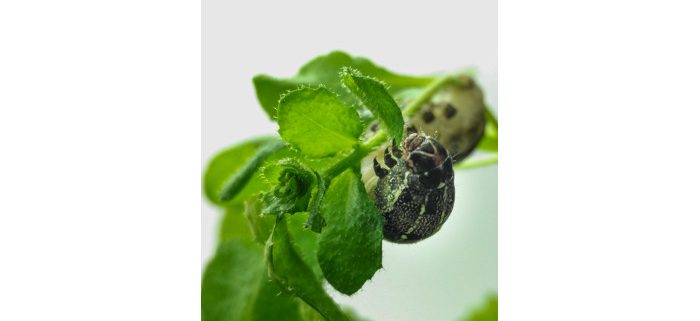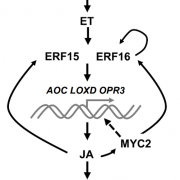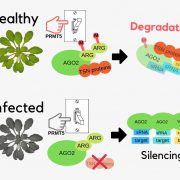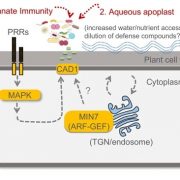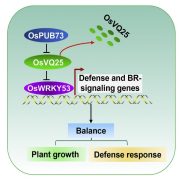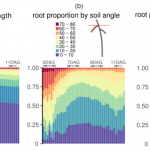Plant Calcium Channels Perceive the Hungry Caterpillar
Meena et al. identify a Ca2+ channel involved in herbivory recognition.
Plant Cell https://doi.org/10.1105/tpc.19.00057
By Mukesh Kumar Meena, Ramgopal Prajapati, Deepthi Krishna and Jyothilakshmi Vadassery are from National Institute of Plant Genome Research (NIPGR), New Delhi, India
Background: Insect herbivory greatly limits plant growth and productivity. The common cutworm Spodoptera litura is a widespread, destructive pest of diverse plants. Plants must rapidly respond to insect herbivory, which feed quickly. Cellular calcium (Ca2+) elevation is an important signal used by plants for recognizing and responding to environmental stress. Plants respond to Spodoptera herbivory and wounding by elevating cytosolic Ca2+ in the wounded leaf. Elevation of Ca2+ requires Ca2+ entry either across the plasma membrane or from intracellular compartments via Ca2+ channels. The early steps of herbivory perception, the Ca2+ channels involved, and the signal transduction pathway that triggers plant defense mechanisms are poorly understood.
Question: The intense pain produced by a bite from the coral snake is due to activation of several acid-sensing ion channels in higher organisms, including humans. In a similar vein, does a plant sense an insect bite using Ca2+ ion channels and how does it activate plant defense?
Findings: Using the model plant Arabidopsis thaliana and the insect herbivore Spodoptera litura, we identified the Ca2+ channels involved in herbivory recognition. We demonstrated that a novel cyclic nucleotide-gated, Ca2+ channel, CNGC19, perceives herbivory and activates plant defense. CNGC19 is expressed in leaf vasculature and is crucial for wound-induced intra-vascular Ca2+ fluxes. Loss of CNGC19 function results in decreased herbivory defense, and aberrant wound-induced Ca2+ fluxes. Breakdown of Ca2+-based defence in cngc19 loss-of-function mutants leads to decreased herbivory-induced jasmonate biosynthesis. cngc19 mutants are deficient in aliphatic glucosinolate accumulation and hyperaccumulate its precursor, methionine. Glucosinolates are crucial secondary metabolites in insect deterrence. CNGC19 modulates aliphatic glucosinolate biosynthesis in tandem with BCAT4, which functions in the chain elongation pathway of Met-derived glucosinolates. Thus, the Ca2+ channel CNGC19 has a key mechanistic role in recognizing herbivory and activating defense signaling.
Next steps: Identifying protein complexes of CNGC19 with other CNGCs and other putative subunits expressed in the vasculature would be an exciting area of research. Future biochemical studies on single and multiple CNGC mutants will be necessary to elucidate the role of this channel in generating both local and systemic Ca2+ elevation upon S. litura herbivory.
Meena, M.K., Prajapati, R., Krishna, D., Divakaran, K., Pandey, Y., Reichelt, M., Mathew, M.K., Boland, W., Mithöfer, A., and Vadassery, J. (2019). Cyclic nucleotide gated channel 19 (CNGC19) is an important Ca2+ channel regulating Arabidopsis defense against Spodoptera herbivory. Plant Cell DOI: https://doi.org/10.1105/tpc.19.00057
Key words: calcium signaling, CNGC, herbivory, plant defense


